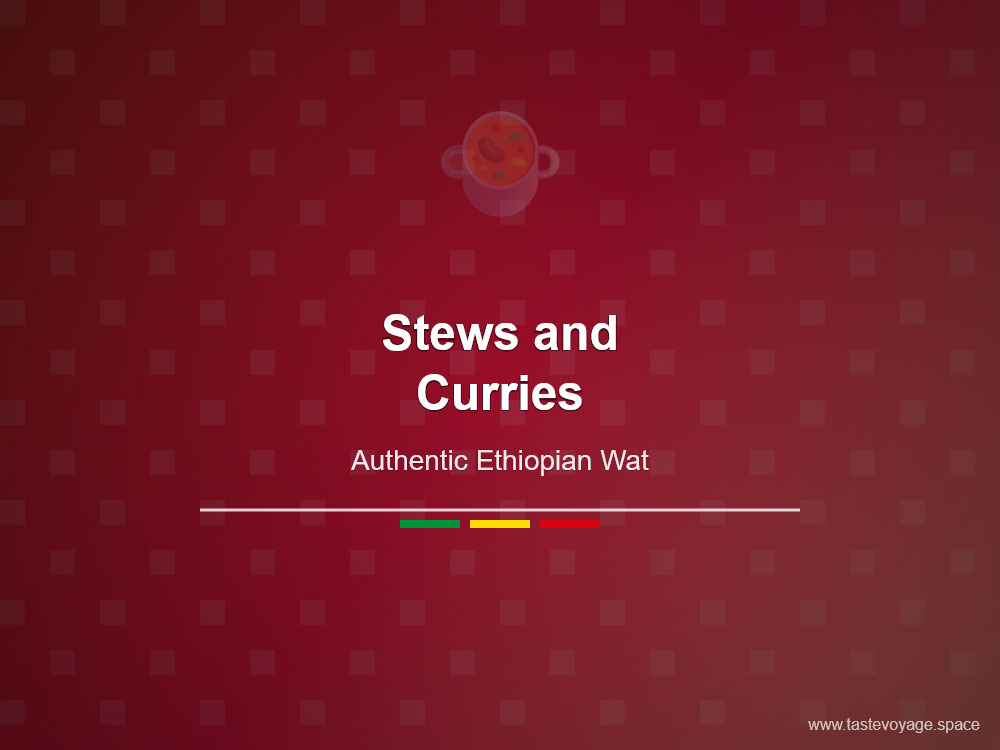Authentic Ethiopian Wat Recipes: Traditional Stews You’ll Love
Travel the World Through Food >> Ethiopian Cuisine>>Stews and Curries>> Authentic Ethiopian Wat Recipes: Traditional Stews You’ll Love
Authentic Ethiopian Wat Recipes: Traditional Stews You’ll Love
Ethiopian Wat Recipe Collection (Traditional Stews): A Culinary Heritage
Ethiopian Cuisine is renowned for its vibrant flavors, rich textures, and deeply rooted cultural traditions. Among its most celebrated dishes are the various types of Ethiopian Wat, a collection of traditional stews that embody the heart and soul of Ethiopian culinary arts. These stews are more than just meals; they are a reflection of history, community, and the artistry of spices.
The Cultural Significance of Ethiopian Wat
Ethiopian Wat holds a special place in the hearts of many. It is a dish that brings people together, often served during communal gatherings, religious celebrations, and special occasions. The preparation of Wat is considered an art form, passed down through generations, and symbolizes unity and hospitality.
The diversity of Wat recipes mirrors Ethiopia’s rich cultural tapestry. Each type of stew uses unique Spice Blends and ingredients, highlighting regional flavors and local traditions. From spicy Doro Wat to vegetarian-friendly Misir Wat, these stews showcase the versatility and depth of Ethiopian cuisine.
The Culinary Roots of Ethiopian Wat
At the core of Ethiopian Wat lies a delicate balance of spices, herbs, and slow-cooked ingredients. Ethiopian cuisine is characterized by the use of berbere, a fiery spice blend that infuses each stew with warmth and complexity. Similarly, Niter Kibbeh, a seasoned clarified butter, adds a fragrant depth, elevating the dishes to an extraordinary level.
The preparation of Wat demonstrates a sophisticated understanding of flavor layering. Ethiopian stews are typically cooked for hours, allowing the ingredients to meld harmoniously. This slow cooking process cultivates a rich, soul-satisfying taste that has been cherished for generations.
The Variety and Culinary Significance
Ethiopian Wat comes in many forms, each with its own story and significance. Doro Wat is perhaps the most famous, a spicy chicken stew often served during holidays and special feasts. Sega Wat, made with beef, is another hearty option that showcases the traditional use of ingredients like vegetables and spices.
Vegetarian and vegan options are also prevalent, such as Misir Wat (lentil stew) and Kik Wat (split peas). These dishes highlight Ethiopia’s inclusive culinary approach, emphasizing plant-based ingredients that are both nourishing and flavorful.
The Role of Injera in Ethiopian Wat
Traditionally, Ethiopian Wat is served atop injera, a sourdough flatbread that acts as both a plate and utensil. Injera’s slightly tangy flavor complements the spicy stews perfectly, creating a harmonious dining experience. This combination exemplifies Ethiopia’s communal eating style, where sharing food fosters connection and warmth.
Embracing the Tradition
Today, Ethiopian Wat continues to inspire chefs and home cooks worldwide. Its rich history, vibrant flavors, and cultural depth make it a truly timeless cuisine. Exploring Ethiopian Wat is not just about tasting a dish; it’s about experiencing a tradition that celebrates community, artistry, and the profound beauty of flavor.
Celebrate Ethiopian Culinary Heritage
Whether you are a seasoned foodie or a curious newcomer, Ethiopian Wat offers an invitation to discover a world of bold spices and heartfelt storytelling through food. Its enduring appeal lies in its ability to bring people together and honor centuries of culinary craftsmanship.
Discover the magic of Ethiopian Wat — a testament to Ethiopia’s rich culinary heritage. Embrace the tradition, savor the flavors, and appreciate the cultural significance behind each hearty stew.
